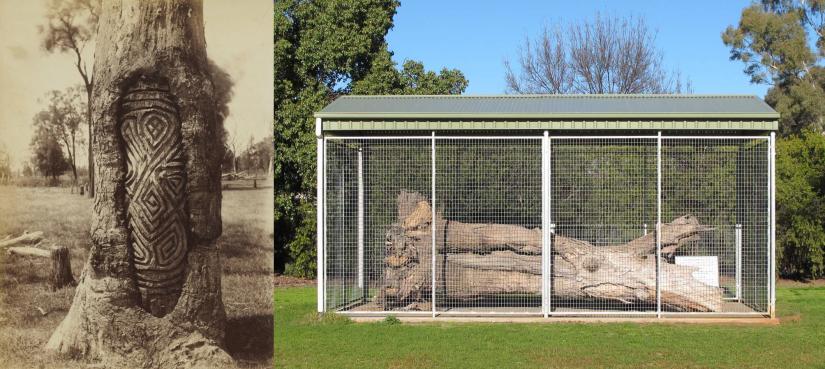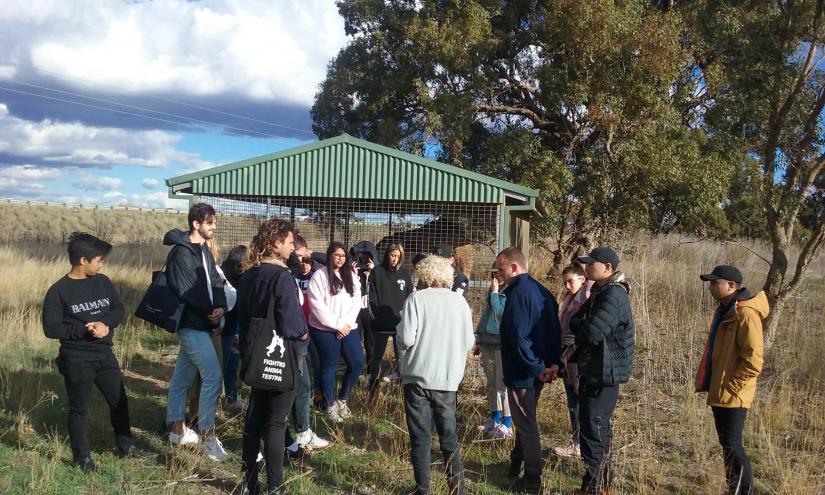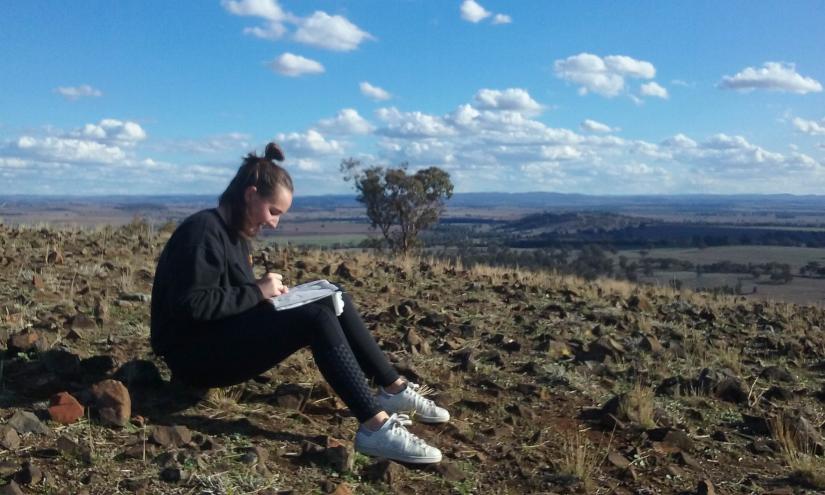Designing a future for the Wiradjuri past
If you find yourself in Dubbo or its surrounds and you come across a tree inside a cage, take note: you’re treading on sacred Tubba-Gah Wiradjuri ground.
These cages house trees that were scarred or carved by Wiradjuri people, some as far back as the 1800s, to make tools or to mark significant burial sites. But despite their immense cultural and historical value, the trees continue to be damaged or destroyed in acts of racial or territorial violence.
Enter a group of UTS students in the Spatial Agency studio, part of the Bachelor of Interior Architecture. They spent a week in Dubbo and the nearby town of Wellington, engaging with the local Aboriginal community to develop a series of design proposals to better protect the trees.
“The studio requires students to conceive site specific, culturally appropriate, alternative design solutions to the current practice of placing Aboriginal culturally modify trees in cages,” says studio leader Dr Matthieu Gallois.
“The current practice of placing the trees in cages is a basic, brutalist solution to a complicated set of issues.”

Tens of thousands of carved trees once dotted the landscape. Extensive land clearing, the decay of old trees, fire and vandalism have all contributed to there now being only a handful left. Photos: State Library of NSW, Interior Architecture Spatial Agency.
The project – and the studio itself – was built on the concept of community-led design, which required the students to work closely with members of the Tubba-Gah Maing Wiradjuri Aboriginal Corporation the local community, seeking their opinions, guidance and cultural knowledge as the driving forces shaping the design proposals.
For student Danielle Meyerowitz, the experience exposed her to a whole new way of working, one in which the designer took a backseat to the holders of cultural knowledge. A number of critical ideas emerged from this engagement, including the need to incorporate the significance of the Tubba-Gah Wiradjuri culture into the design, the need to make the trees a discreet part of the landscape that didn’t attract attention, and the uncomfortable symbolism of the cages themselves.

UTS Interior Architecture students spent a week in Dubbo and the nearby town of Wellington, engaging with the local Aboriginal community to develop a series of design proposals to better protect the trees. Photo: Danielle Meyerowitz
The learning curve was steep – for many students, the studio was their first experience adapting their design processes to work effectively within another culture.
“A huge part of working with Indigenous communities, and this is a key theme of the studio overall is that you give agency to the community – you’re working with them so that they can make the ultimate design decisions,” says Meyerowitz, who developed a proposal for a community centre housing scarred trees and other repatriated Aboriginal artefacts.
“I think this semester has really opened my eyes to the impact of space on communities that struggle, and the political impact of space. Architecture and design doesn’t need to be a first-world or a one-percenter experience; it can really help and impact people of all walks of life.”

Community-led design exposed students like Georgina Robertson to a whole new way of working. Photo: Danielle Meyerowitz
At the end of the week, the students presented their designs to the locals they’d been working with; they’re now compiling a research report to send to the community that includes geopolitical maps of the area, a history of the caged trees, an exploration of Tubba-Gah Wiradjuri culture, and the final version design briefs that they’ve produced.
“They’re really good concepts, and there might be something, maybe a seed planted in one or two of them, that might grow,” says Lewis Burns, Chairperson of the Tubba-Gah Maing Wiradjuri Aboriginal Corporation.
“They had to critically think about it, which is something a lot of people don’t really do – they sit down and really think about designing something that’s better than what we’ve already got.”
Learn more about the UTS Bachelor of Design in Interior Architecture.
